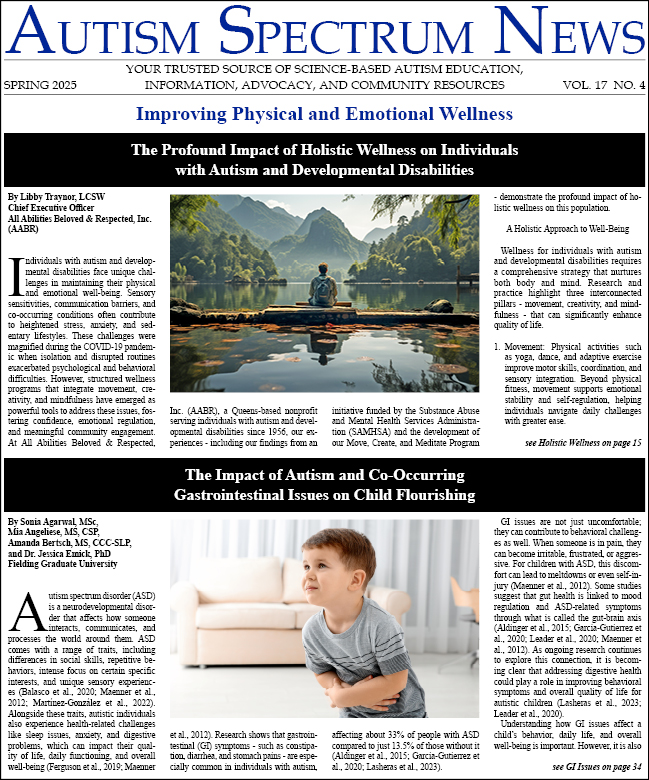In a summary of key findings from the 2015 National Autism Indicators Report, we aging parents now have confirmation: “Young adults with autism had the lowest rate of independent living (19%) compared to their peers with other disabilities.”1 The 2015 State of the State in Developmental Disability reported: “71% of people with developmental disabilities live at home with a family caregiver… [and] over 41,000 individuals with I/DD are living with caregivers over the age of 60 in Pennsylvania..”2

PA Deputy Secretary Nancy Thaler’s opening statement at the 1/16/16 EASI Foundation’s conference on Creating Communities for Adults with Special Needs was: “We should not lose sight of the fact that, in this country it’s a poverty issue, it’s not just a disability issue. Housing in this country is a crisis!”3
Too many adults with autism and their aging parents are resource poor and are competing with single moms on welfare, people with mental illness, people with developmental disabilities, people with physical limitations and the elderly for affordable housing in a scarce market. In addition, residential funding is on the decline while the numbers of autistic adults are on the rise.
The quality of life for too many our adult children hangs on our ability to continue living with them. This, of course, is impossible indefinitely because we are not engineered to outlast them. Planning and implementing successful outcomes for our children’s future without us in it is not just emotionally overwhelming, it is virtually impossible for us to accomplish without more support!
Those of us who are providing direct care for our dependent adult children are often struggling financially, coping with aging and health issues and like me, are feeling burnt-out. Michelle Diament, a writer for the Disability Scoop website, addressed this concern in a 2009 article: “Researchers followed a group of moms of adolescents and adults with autism for eight days in a row. Moms were interviewed at the end of each day about their experiences and on four of the days researchers measured the moms’ hormone levels to assess their stress. They found that a hormone associated with stress was extremely low, consistent with people experiencing chronic stress such as soldiers in combat, the researchers report in one of two studies published in the Journal of Autism and Developmental Disorders. This is the physiological residue of daily stress, says Marsha Mailick Seltzer, a researcher at the University of Wisconsin-Madison who authored the studies.”5
Out of situational necessity, many of us still revolve too much of our life around our adult child. This is not our preference, but we cannot find any alternatives. Statistically, “4 out of every 10 adults with autism are disconnected from both work and-secondary education,”4 meaning they have nothing to do and nowhere to go. It’s not just that our children cannot afford to live on their own, they often have no life of their own outside of what we create and maintain for them.
In Pennsylvania, many families are receiving day supports called “waivers.” Initially, waivers were designed as alternatives to institutional care. Our children had a choice to “waive” their right to institutional care in lieu of community-based supports. In today’s culture of self-determination, institutional care is not readily available.
My daughter receives 5 hours of support, 7 days a week. She has an Individualized Service Plan (ISP). She does have opportunities to go places and do things without me. This is good for both of us, but she is still one of those 4 out of 10 individuals not working and not in school. So, what does she do all day? She spends our money.
I am determined to succeed at the endeavor most aging parents take for granted, securing for my daughter a life of her own. In the process, I am going to take my life back. Initially, my strategy was to build a web of formal and informal supports, replacing myself with a team. I have encountered something I call the spider web phenomenon. Did you know that every day a spider needs to rebuild her web? So far this hasn’t worked because without the spider, the web decays. People with adequate social skills innately know how to rebuild their own webs. So who is going to build and maintain hers?
Now I am beginning to think differently. I am coming to the conclusion that residential living isn’t necessarily a bad idea. Maybe we just need to tweak the model. Intentional communities with brilliant designs are beginning to pop up. At the same EASI Foundation conference mentioned earlier, Desireé Kameka, National Coordinator, Coalition for Community Choice at the Madison House Autism Foundation in Rockville, MD, showcased some exciting pilot projects. Unfortunately, most aging parents like myself are priced out.
In the end, I believe poverty is a significant factor. Currently, without supplemental residential funding, most adults with autism cannot afford to live anywhere else but with their parents. Currently the potential sources of state and federal funding are focused elsewhere. What will it take to wake our elected officials up? If we are not proactive now, the epidemic numbers of autistic adults will face much more costly crisis placements into prisons, nursing homes and homeless shelters!
If our Federal and State governments share the cost of developing innovative affordable housing options with us now, and they support us now in the process of creating the necessary networks of supports, our children will win, and the self-determination movement will succeed. Help us advocate for the funding we need now to create the affordable housing models our adult children need. Help us let go. It’s the right thing to do.
Alexandra Bricklin is a music therapist currently living with her husband in an apartment above the garage of the house owned by Rebecca Bricklin’s Personal Assurance Team Inc., the corporation founded to create and protect quality of life across lifespan for their daughter Rebecca and two roommates. To learn more, visit our Facebook page, Rebecca Bricklin’s Personal Assurance Team Inc. at www.facebook.com/CormmunityforRebecca or contact Alexandra at alexsolre@mac.com.
References
- Roux, Anne M., Shattuck, Paul T., Rast, Jessica E., Rava, Julianna A., and Anderson, Kristy, A. National Autism Indicators Report: Transition into Young Adulthood. Philadelphia, PA: Life Course Outcomes Research Program, A.J. Drexel Autism Institute, Drexel University, 2015.
- Desireé Kamika, http://www.easifoundation.org/conferences/2016/1/14/2015-housing-conference-videos-now-available.html quoting Braddock, D., Hemp, R., Rizzolo, M.C., Tanis, E.S., Haffer, L., & Wu, J. (2015). The State of the States in Intellectual and Developmental Disabilities: Emerging from the Great Recession. Washington, DC: American Association on Intellectual and Developmental Disabilities
- PA Deputy Secretary Nancy Thaler, http://www.easifoundation.org/conferences/2016/1/14/2015-housing-conference-videos-now-available.html
- Roux, Anne M.National Outcomes of Transition Age Youth on the Autism Spectrum. NIH Interagency Autism Coordinating Committee. http://videocast.nih.gov/summary.asp?Live=17975&bhcp=1
5. Diament, Michelle. (2009). Autism Moms Have Stress Similar To Combat Soldiers. Retrieved March 02, 2016, from https://www.disabilityscoop.com/2009/11/10/autism-moms-stress/6121/





This hasn’t gotten any better
I agree with everything in this article. I cannot have a job because of caring for my son